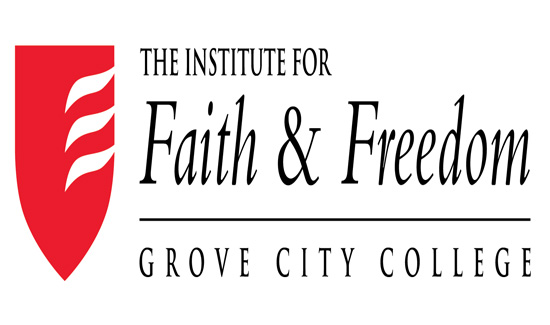Pittsburgh International Passenger Rebound Falters
![]()
(August 10, 2022)–Background: After closing the monthly passenger count gap relative to the 2019 pre-pandemic readings through much of 2021 and through April of 2022, the May and June counts showed the gap starting to widen again. Note that monthly comparisons to 2020 and 2021 are essentially useless from the standpoint of understanding how Pittsburgh International Airport (PIT) is faring in terms of recovering to pre-pandemic activity.
____________________________________________________________________
2022 passenger count gap by month
As a May Policy Brief (Vol. 22, No. 20) noted, in January there were 30.4 percent fewer passengers at PIT compared to the same month in 2019—456,071 to 654,886. That figure improved a bit in February when the shortfall dipped to 22.3 percent and even improved further to 19.5 percent in March. Note that because of enormous variations in seasonality, monthly data comparisons are made to the same month in prior years.
Compared to national figures, as measured by the TSA daily security screening count, PIT trailed the national rebound substantially. In the same three months, TSA checkpoint counts trailed 2019 levels by 22.5 percent in January, 15.6 percent in February and 12.4 percent in March. For the first quarter, PIT’s average shortfall compared to 2019 was 25.7 percent while the national was 16.8 percent. In terms of actual count, PIT had 504,109 fewer passengers in the first quarter of 2022 than 2019.
On a positive note, PIT’s passenger rebound continued in April with the month’s count only 13.3 percent behind the April 2019 number. At the same time, the TSA count shortfall slipped to 9.5 percent. Unfortunately, April would be the only month for PIT passengers to post a shrinking shortfall compared to pre-pandemic levels in the second quarter. In May, PIT’s shortfall from 2019 rose to 14.7 percent and in June climbed further to 18.5 percent. Meanwhile, the TSA count deficit relative to 2019 also rose in both May (10.1 percent) and June (10.9 percent)—but far less dramatically than PIT’s widening gap.
The somewhat better second quarter numbers at PIT reduced the total passenger count shortfall to 402,423, compared to 2019, an improvement of 101,486 compared to the first quarter. But, unfortunately, the trend during the quarter was in the wrong direction. In March, the passenger shortfall was 163,446. But after dropping sharply in April and May compared to the first quarter, it jumped in June surpassing the March reading at 166,875.
International Passengers
International travel counts at PIT have been especially depressed so far in 2022. In the first quarter, the number of international passengers was down an average of 62.8 percent from first quarter 2019. By comparison domestic travel was off by an average 23.3 percent and total travel 24.1 percent. Obviously, domestic counts are very large compared to international. Note that in pre-pandemic first quarter of 2019, international travel at PIT of 40,400 amounted to 2 percent of the domestic count of 2,087,900.
In the April through June period, international passengers began to show stronger gains. From the March shortfall from March 2019 of 64.9 percent, the April number fell slightly to 61 percent then to 58.6 percent in June. For the three months, international travel was 40,460 (53.4 percent) lower than the passenger count in the April–June period of 2019.
The June increase in international travel from May—9,673 to 17,632 (82 percent) —no doubt reflects to some extent the return of British Airways in early June. However, bear in mind that there is typically a big jump from May-to-June as summer travel kicks in. For instance, in 2017, the May-to-June jump was 78 percent and in 2018 the rise was 92 percent. But in 2019, the increase was only 36 percent. The weaker May-to-June rise in 2019 no doubt reflected the loss of subsidized carriers and Delta ending its seasonal flights to Paris. British Airways had started flights in April but, evidently, its June 2019 passenger count was not sufficient to offset the loss of Delta’s PIT-to-Paris flights.
In short, absent figures from British Airways, it is not possible to determine how much it contributed to the June upturn in international passengers. One number is definite: June 2022’s count of 17,632 international passengers at PIT represents a huge 63 percent decline from the 47,000 travelers in June 2018.
Domestic passengers
The 2022 domestic count shortfall from 2019 showed a dramatic improvement in April, falling to 12 percent from March’s 18.6 percent. But the improvement was short lived with the shortfall in June climbing to 17.6 percent. For the second quarter the passenger total was 361,963 below the 2019 total and for June alone it was down 152,723.
In sum, the domestic passenger growth has definitely slowed as measured by the same month in 2019. Bear in mind, too, that total passengers for 2019 rose only 1.2 percent from the 2018 yearly total. That small increase followed fairly substantial annual gains of 7.5 percent in 2018 and 82 percent in 2017. How much of that was owing to subsidized flights as opposed to improved economic conditions is not clear since passengers by carrier are not included in publicly available airport statistics. Some airports do report passengers by airline.
Factors affecting air travel
Several factors will affect the volume of air travel: need for travel related to business; personal and leisure travel demand; availability of flights to preferable locations; price of air fares. The last couple of years have also pointed to the role of health issues that can affect travel. Still, from an economic and financial standpoint, the principal drivers of ticket sales are income, both per capita and total in the service area, population and business demand.
Out-of-region visitor traffic including tourists, business travelers and family or friend visits will have its own set of driving factors and absent data it is unknown what percentage of total passengers they account for or how that percentage has changed since 2019. Changes in preferences or proclivity to fly as an option to driving will also be a factor but those are not easily quantifiable over short periods and are likely more long-term drivers.
In shorter-run terms, the most important factors affecting passenger demand at a non-hubbing airport—which PIT has been for several years—are regional employment (an indicator of the level of business activity), income and population. And as we have seen employment and population gains in the Pittsburgh region have been lackluster for two decades, notwithstanding a few years of decent job growth.
The seven-county metro area population in 2020 was 60,000 or 2.6 percent below the 2000 Census reading. And preliminary readings by the Census point to possible further declines since 2020. So, unless the incomes are growing faster than general inflation as well as air fares, and the propensity to choose air travel is rising, the population stagnation is bound to be a strongly limiting factor for air travel demand.
Compounding the lack of population growth, private-sector job gains have been anemic in the Pittsburgh metro area except for a brief spurt in the 2016-to-2019 period when the U.S. economy was moving ahead at a fast clip. Between 2000 and 2019, average annual employment rose 58,700 jobs or 5.7 percent, an annual average growth of a paltry 0.3 percent.
Employment was hammered in the pandemic with jobs falling by over 200,000 in April 2020 compared to April 2019. And even after the recovery began, 2020 as a whole saw the annual average job count drop by 94,000. During the 26 months that have passed since the precipitous lockdown-induced decline in April 2020, jobs have been edging upward. However, in June 2022 they were still 38,000 below June 2019.
Remarkably, despite the modest job growth —which are dwarfed by many Sun Belt cities such as Raleigh, N.C., Pittsburgh metro private jobs in the first six months of 2022 averaged only 1.019 million or 51,000 below the first half average in 2019. But really telling is the fact that in the first six months of 2001—21 years ago—employment averaged 1.024 million, 5,000 more than 2022. In stark contrast, during the first six months of 2022, private employment in Raleigh averaged 584,600 compared to 541,200 in the first half of 2019, before the pandemic. Stunningly, in the first half of 2022, Raleigh has 8 percent more jobs than in the January–June period of 2019.
Conclusion
Pittsburgh International Airport is struggling to get back to pre-pandemic passenger counts. And in the last couple of months, it has lost ground. Perhaps the anemic economic recovery, the lack of population growth and failure to return to pre-pandemic job levels are to blame.
Will a new terminal fix the ongoing weak passenger numbers? That appears to be doubtful—unless the policy makers decide to enact a much more business-friendly environment that would spark a more vibrant and faster-growing economy.
Jake Haulk, Ph.D., President-emeritus
If you wish to support our efforts please consider becoming a donor to the Allegheny Institute.The Allegheny Institute is a 501(c)(3) non-profit organization and all contributions are tax deductible.Please mail your contribution to:
The Allegheny Institute
305 Mt. Lebanon Boulevard
Suite 208
Pittsburgh, PA15234





